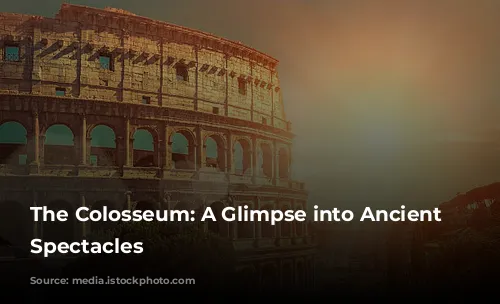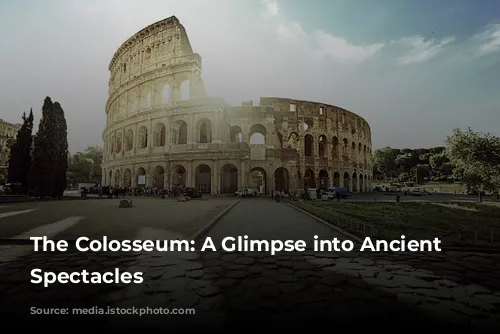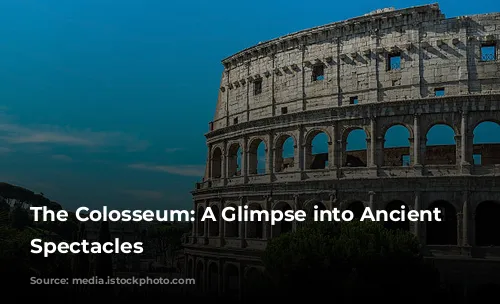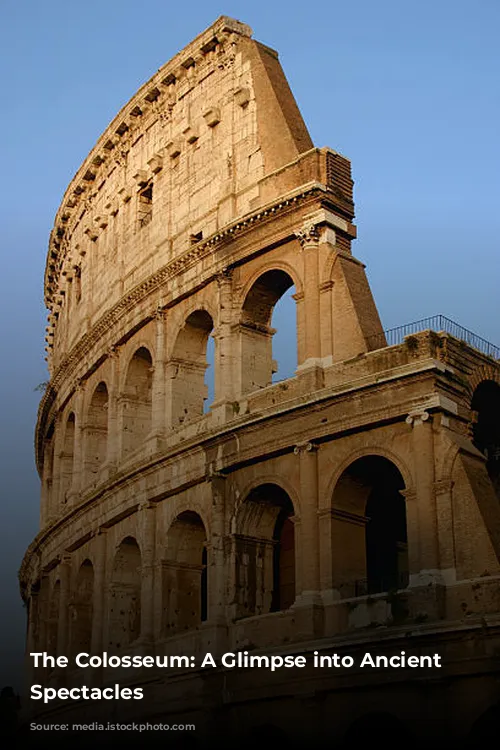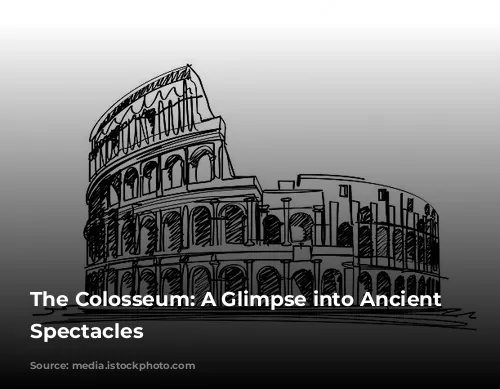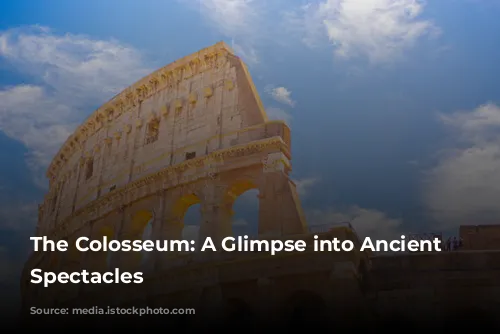The Colosseum, a towering symbol of Ancient Rome, is more than just a pile of stones. Its nearly 2,000-year history whispers tales of gladiatorial clashes, brutal hunts, and gruesome executions. A visit to this iconic landmark is a journey back in time, and this article will unveil fascinating facts about its construction, purpose, and legacy.
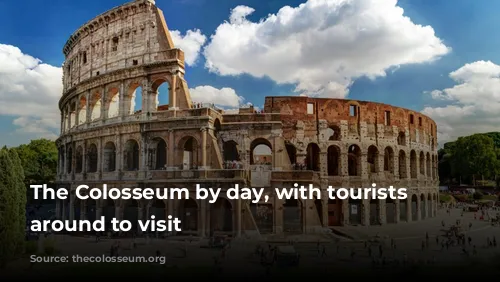
Building a Monument: The Colosseum’s Origins
When was the Colosseum built? Construction began in 72 AD under Emperor Vespasian, who unfortunately passed away before its completion. His sons, Emperors Titus and Domitian, finished the project in 80 AD.
Who built the Colosseum? It was largely constructed by Jewish slaves who were transported to Rome after the first Jewish-Roman war. Imagine the sheer scale of labor involved! Estimates suggest that 60,000 to 100,000 slaves toiled under Roman engineers and craftsmen to bring this colossal structure to life.
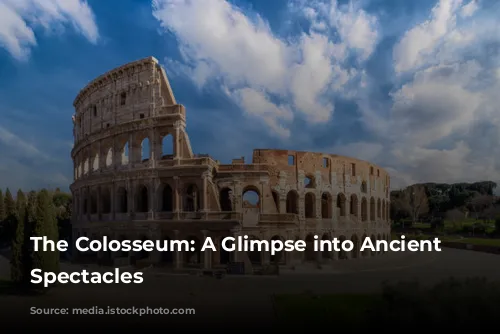
The Colosseum’s Rise: A Symbol of Power and Entertainment
Why was the Colosseum built? After the devastating fire of 64 AD, Emperor Nero erected a lavish palace for himself. The people of Rome, however, were not pleased with this extravagant display. When Vespasian seized power, he demolished Nero’s palace and ordered the Colosseum to be built on its foundations. The Colosseum was designed to be a grand amphitheater where Roman citizens could gather for entertainment and spectacles – a symbol of the Empire’s power and generosity.
What does the Colosseum’s name mean? The Colosseum was initially known as the Flavian Amphitheater, named after the Flavian dynasty. The name “Colosseum” likely derived from the colossal bronze statue of Emperor Nero that once stood nearby. This statue itself was modeled after the Colossus of Rhodes, giving us an idea of its sheer size.
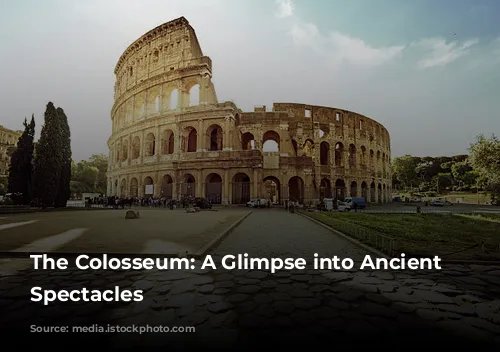
Unveiling the Colosseum’s Dimensions and Features
How big is the Colosseum? The Colosseum is an oval-shaped structure, measuring 189 meters long, 156 meters wide, and 48.5 meters tall. It boasts an impressive surface area of six acres.
How many arches does the Colosseum have? The Colosseum’s outer walls are adorned with three tiers of Doric, Ionic, and Corinthian columns, each with 80 arches. These arches, numbered with Roman numerals, served as guides for spectators to find their seats.
What material was the Colosseum built from? An estimated 100,000 cubic meters of travertine stone, mined from quarries 20 miles away in Tivoli, were used in its construction. Thousands of iron clamps held these massive stones together.
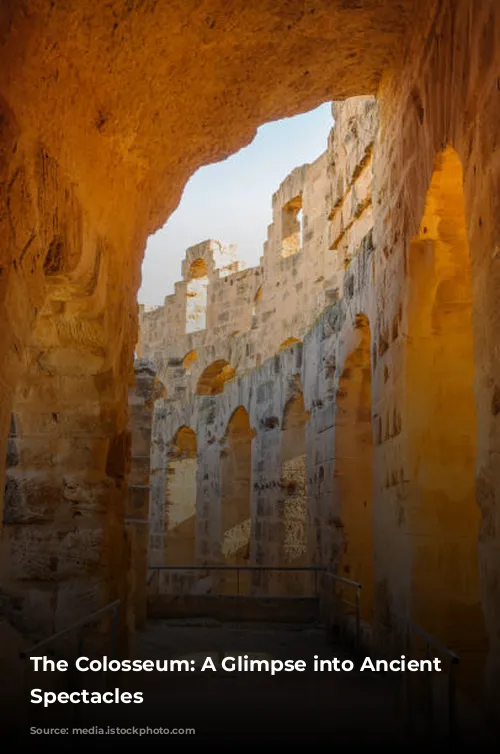
Beneath the Surface: Secrets of the Colosseum’s Hypogeum
What is underneath the Colosseum? The Colosseum’s Hypogeum, meaning “underground,” was a network of tunnels and chambers. This complex system housed gladiators, animals, and prisoners before they entered the arena. Eighty vertical shafts provided access to the arena, and a system of trap doors allowed for elaborate scenery to be deployed during events.

The Colosseum’s Spectacles: A Glimpse into Roman Life
How many spectators could the Colosseum seat? The Colosseum could accommodate a massive audience of 50,000 to 80,000 spectators. Imagine the roar of the crowd during a gladiatorial battle!
How many people died in the Colosseum? It’s impossible to know the exact number, but estimates suggest that as many as 400,000 people, including gladiators, slaves, convicts, and prisoners, perished within its walls over its 350 years of use.
What animals were used in the Colosseum? Lions, tigers, wolves, bears, leopards, wild boar, elephants, hyenas, buffalo, hippopotamuses, crocodiles, and giraffes were all featured in spectacles. These animals were used in staged hunts and as executioners in the damnatio ad bestias, where condemned individuals faced a gruesome demise.
How many animals were killed in the Colosseum? Based on historical accounts, the number of animals killed in the Colosseum likely reached millions. This gruesome reality highlights the brutality of these spectacles and their impact on local wildlife.
What types of spectacles were put on in the Colosseum? The Colosseum was a stage for a variety of spectacles, with gladiator battles being the most famous. Hunts, executions, and even staged naval battles, known as Naumachiae, were also held within its walls.
Were gladiator fights as bloody as believed? While many assume gladiator fights were chaotic and brutal, they were more organized than imagined. Fighters were categorized based on their skills and styles, and referees and doctors monitored the matches. While fights were certainly not bloodless, they weren’t the free-for-alls often portrayed in movies and books.
Were Christians martyred in the Colosseum? While Christians were persecuted in ancient Rome, there’s no conclusive evidence linking the Colosseum to specific martyrdoms.
Did the events depicted in the movie “Gladiator” really take place? While the movie took liberties, Emperor Commodus was indeed a real Roman Emperor who was known for his love of gladiatorial combat. He did participate in battles, often against weakened opponents or harmless animals, earning him the reputation of a sadist. However, the movie’s depiction of his death in a gladiatorial battle is fictional.

The Colosseum’s Legacy: From Arena to Tourist Attraction
When was the Colosseum last used to host fights? While the exact date is unknown, the last recorded gladiator battles occurred in 435 AD. Hunts continued for another century.
Why did gladiator fights in the Colosseum stop? While the rise of Christianity is often cited as the reason, the primary factor was cost. The Colosseum was in a state of decline, the Roman Empire was weakening, and the resources needed to maintain the structure, pay gladiators, and provide animals became scarce.
What catastrophes has the Colosseum suffered? Throughout its history, the Colosseum has endured at least three major fires and four earthquakes. These events have significantly damaged the structure, which has been repaired and rebuilt numerous times.
What has the Colosseum been used for other than an arena? Over time, the Colosseum has been used as a cemetery, a place of worship, housing, workshops, and even a fortified castle. Today, it stands as a testament to Roman history and a major tourist attraction.
How many people visit the Colosseum every year? The Colosseum draws over 7 million visitors annually, making it one of the most visited landmarks in the world. This number has increased significantly in recent years as tourism has rebounded after the pandemic.
The Colosseum, a symbol of Roman might and power, has survived centuries of change and destruction. Its weathered stones hold echoes of a bygone era, reminding us of the spectacles, violence, and grandeur of ancient Rome. A visit to this iconic landmark offers a glimpse into the past, a journey through time that leaves a lasting impression.
